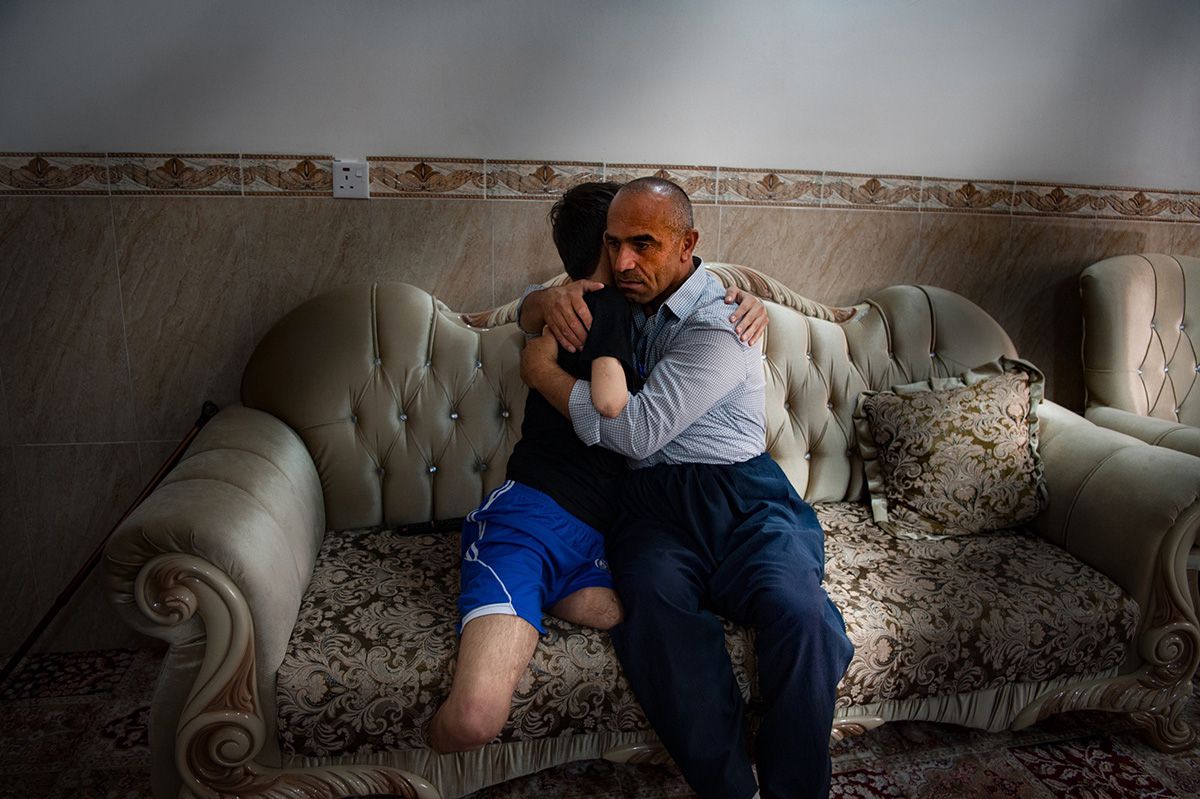Interview with documentary photographer
Silvia Alessi
Beauty isn’t about having a pretty face. It is about having a pretty mind, a pretty heart, and most importantly a beautiful soul.
Interviewed by Apratim Saha
Photographs by Silvia Alessi
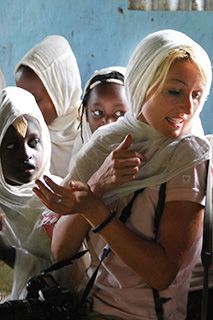
Silvia Alessi
A 44-year-old hairstylist and makeup artist, started taking photographs during her travels in Asia since 2004 and developed a passion for another kind of photography through which she tells stories in a different way using staged portraits and visual contrasts. The most important experiences were those in Arunachal Pradesh, West Papua and Afghanistan.
In her first project, Skin, where she portrayed fusion of the Indian albino people with acid attacked women. Her second project, Beyond the Line, portrays the scars of Peshmerga soldiers in their everyday life. She also portrayed some of the female soldiers in full war uniform along with a homosexual boy dressed in a tulle skirt, inside a military base in Northern Iraq.
In this interview for Exposure, Silvia had a chat with our founder & editor-in-chief Apratim about her journey of photography.
1. Let’s start from the beginning. Being a makeup artist and hairdresser what drives you into photography?
I started taking photographs because I always loved travelling during the summer holidays. My first photographs were the classic travel photographs: faraway countries, beautiful people around the world. Over the time I developed a new and deeper research that led me to get interested in the social issues underlying stories worthy of being told, where the person portrayed had the greatest importance. In approach to the posed portrait, the aesthetic aspect of my work has played a fundamental role. I like to make up and comb the subjects I portray, touching them allows me to enter into a special relationship with them so that I can feel free while talking with them about everything. I also take great care of the composition of the photo, I feel that my kind of work has helped me a lot from this point of view.
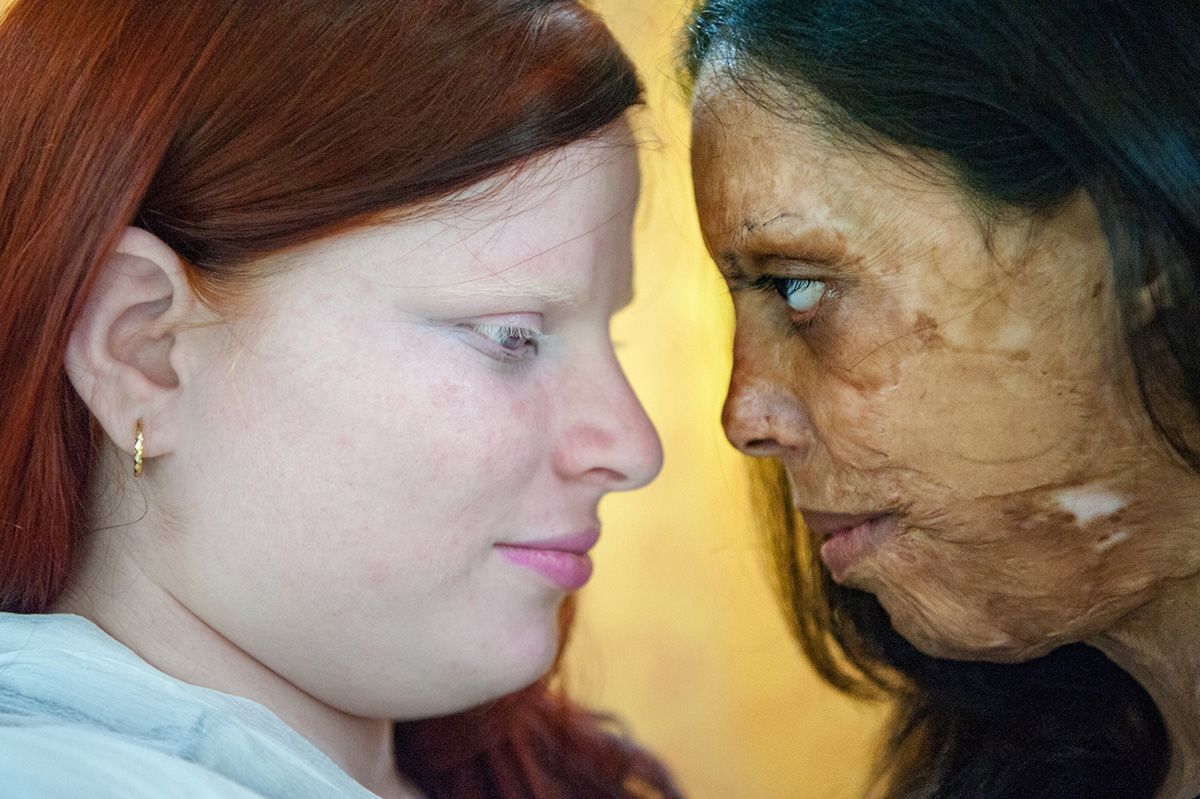
2. So, you travel with Roberto, your life companion, all around the world. While travelling by Indian railway you took one portrait of an albino girl Namira accidently, then you hunted down her in a city of 21 million inhabitants, Mumbai. This is how your ‘Skin’ project has been started, tell me more about this.
Skin Project is my first actual photographic project. It came after many years of travelling Afghanistan, Papua which made me improve my technique and approach technique towards people but it was the first project where I decided everything: where to go, what to portray, whom to portray, what stories to tell. Namira and her angelic beauty, the whiteness of her skin, had captured me such an extent that led me to say: “I want to find her!”
The enormous difficulties that an albino face, convinced me that our skin is the main cause of discrimination.
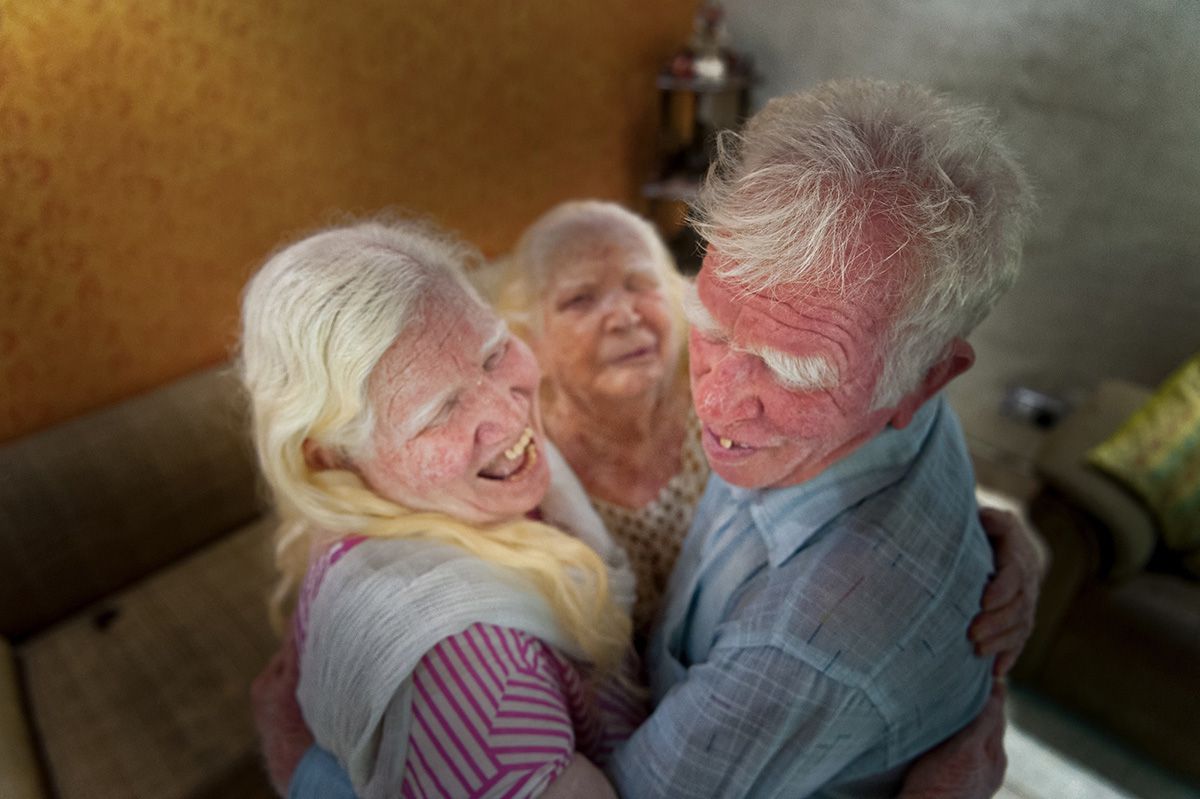
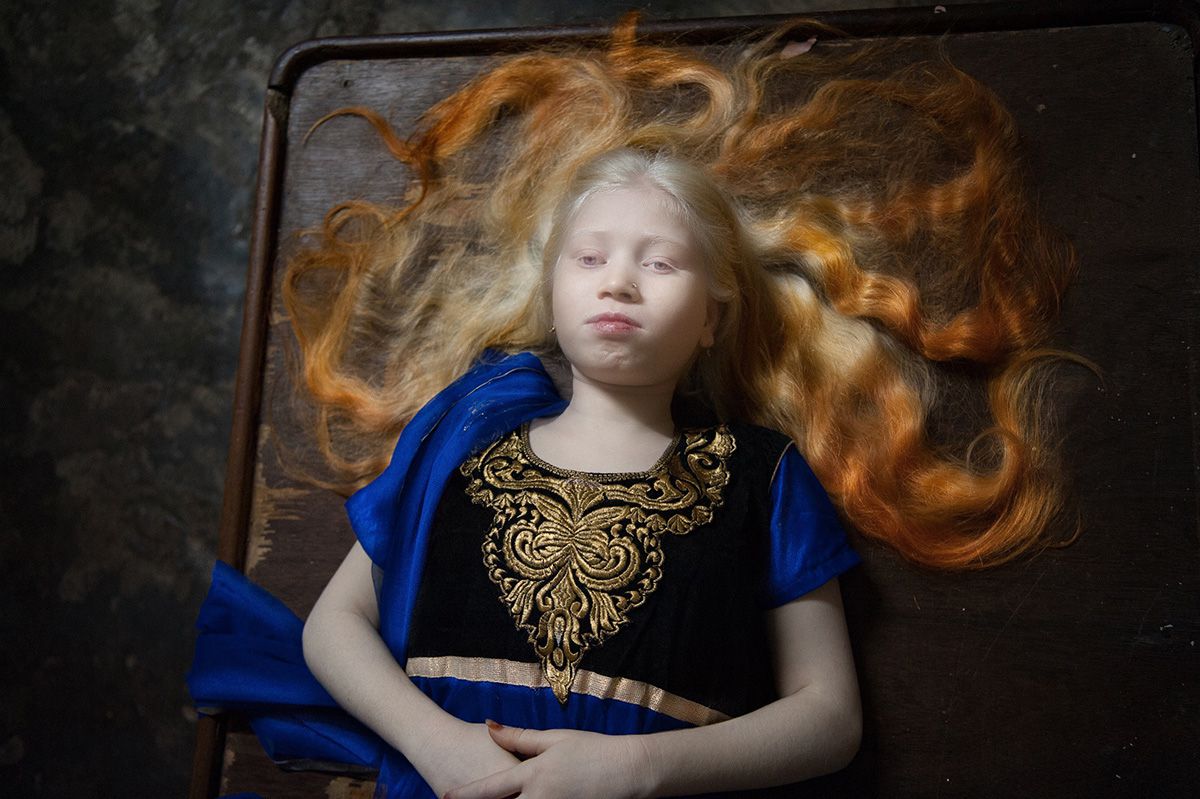
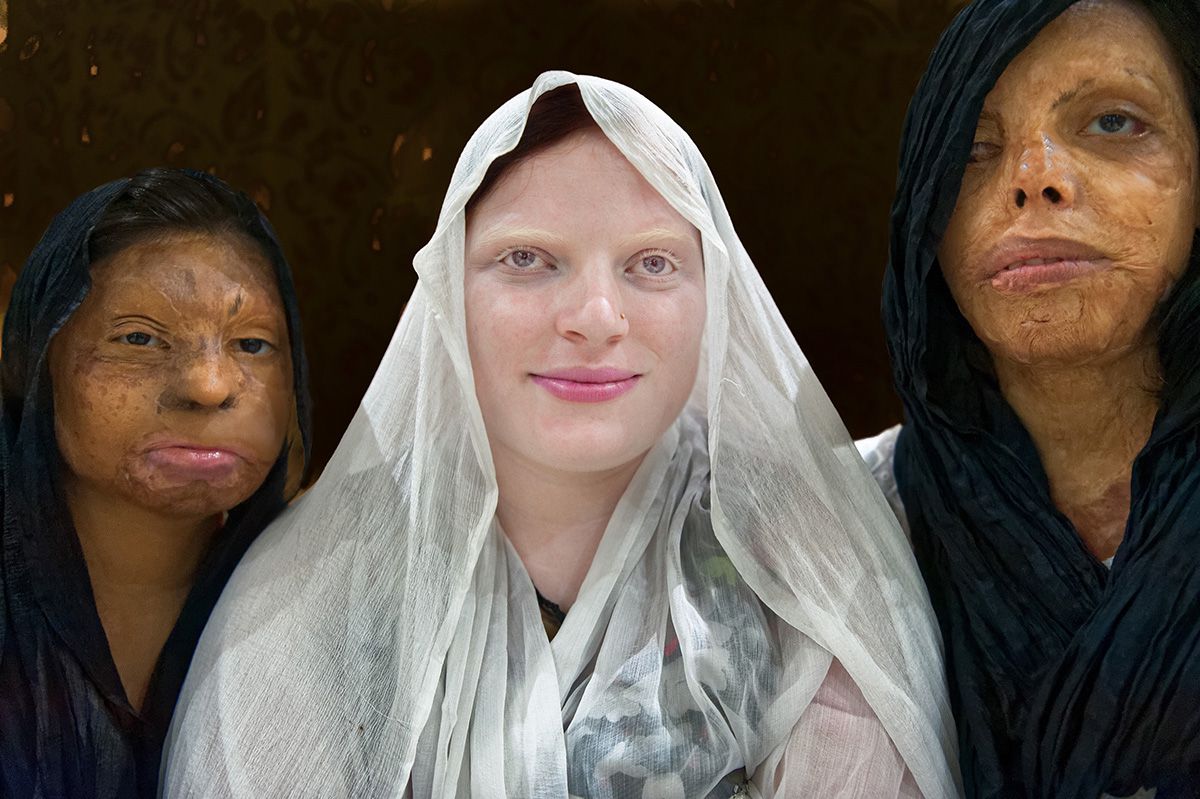
3. Albinism is a congenital disorder and there are albinos all over the world. Why haven’t you clicked albino people from other countries also to continue this project?
I wanted to continue looking for albino people all over the world. Let me tell you a fascinating incident about a child in Iraq. These kind of people make my grey matter lively. They are extremely shy and are afraid of being mocked. Thinking about them, I dismissed the idea of continuing the research because I was frequently overwhelmed by the challenging ideas. But it is not excluded from my mind and heart, I may resume the project in other countries.
4. I’m more interested in your work on the victims of acid attacks. Normally these kinds of acid attacks arise out of the rejection of unwanted male attention, disgruntled fathers, disenchanted lovers, jealous colleagues or those who are seeking revenge against a family. Why it became so important to you that you decided to continue your skin project with acid attacked women?
Reflecting on the skin as a source of discrimination, I came across several women, whose lives were severely scathed by acid. Those who commit this heinous crime and want to destroy the existence of women from society, I want to condemn them to civilian death. I wanted to portray albino people and acid scarred women together to induce people to reflect a strong visual contrast. Meeting those women made me a strong woman. I learned a lot from them, for example- they don’t want to be called victims but survivors. And this thing means a lot. It means that for the very first time a new generation of women want to make their voices loud and clear against this heinous and widespread crime.
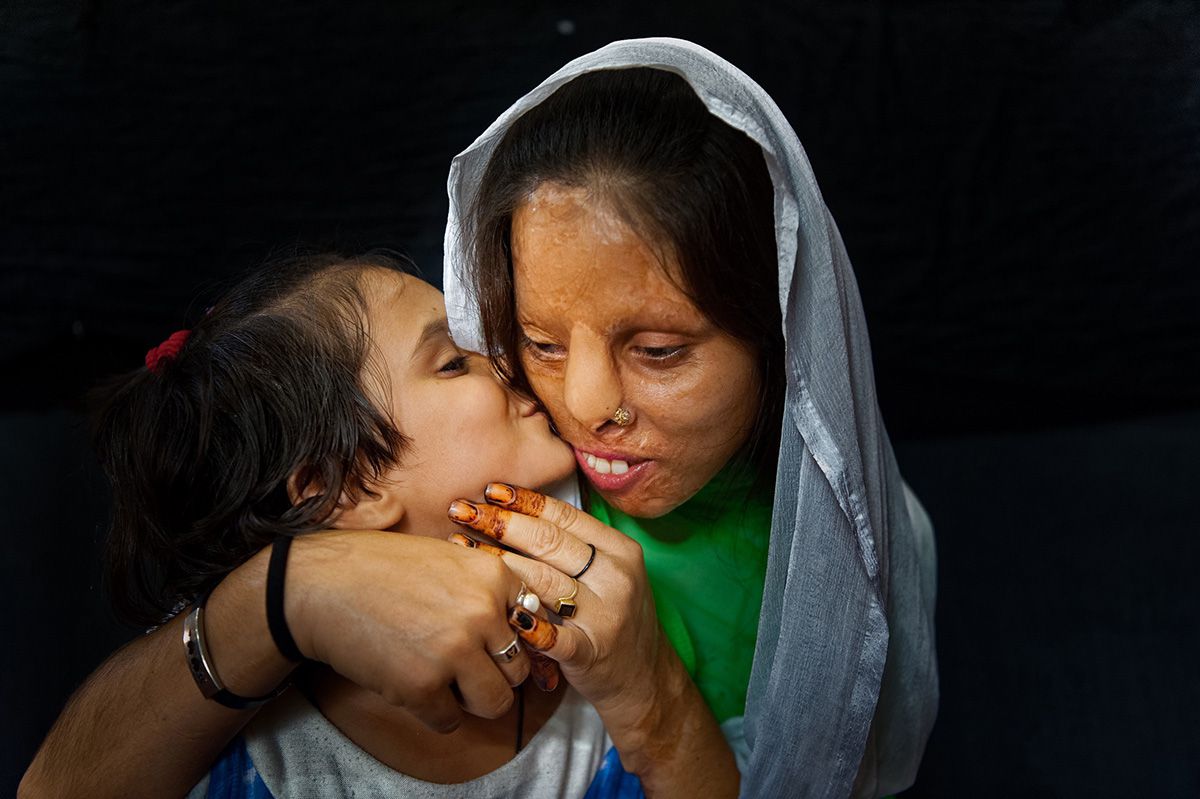
5. How did you find out those women?
In this research, I followed two paths.In New Delhi, I entrusted myself to a friend who helped me to find contacts and to overcome the difficulties of relationship and distrust and in Agra, I frequented the “Sheroes Hangout” café for a few days, where only acid-scarred women work. They have allowed me to portray them with a great simplicity. The shot that struck me the most while I was preparing to portray Shabnam. Suddenly her daughter ran to kiss her. I could not help but captured that moment of spontaneous and radiant happiness that overcame all adversities.
6. In portrait photography, the relationship between the photographer and the subject is very important. How do you approach that dynamic personally?
I don’t know how, but it’s easy for me to put people at ease. I have a very easy and playful approach because I am used to work with people and to take care of them. When I first meet my subjects, I never shoot them. I always spend time with them. Usually the first day I don’t shoot at all.
7. This insanity of social violence of men has been increased in the Indian subcontinent for the past decades. Do you have any personal message that you want to convey through this project?
I define myself as an artistic photographer, and as such, I do not try to convey messages, rather visions. I like to create images that can provoke some reactions among the viewers. Certainly, the images of the scarred women speak a lot, they tell about the pain and the marginalization and an awful injustice committed towards women. I really appreciate their courage that they wanted to be portrayed, just to bring in light the awful crime of acid attack and the authorities need to tackle these incidents with more stringent laws.
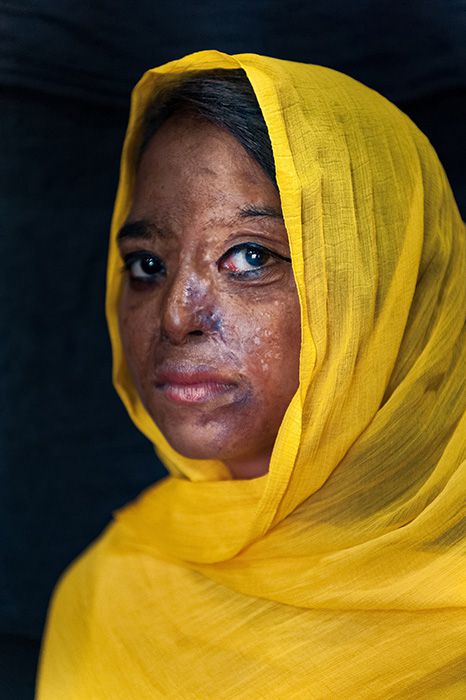
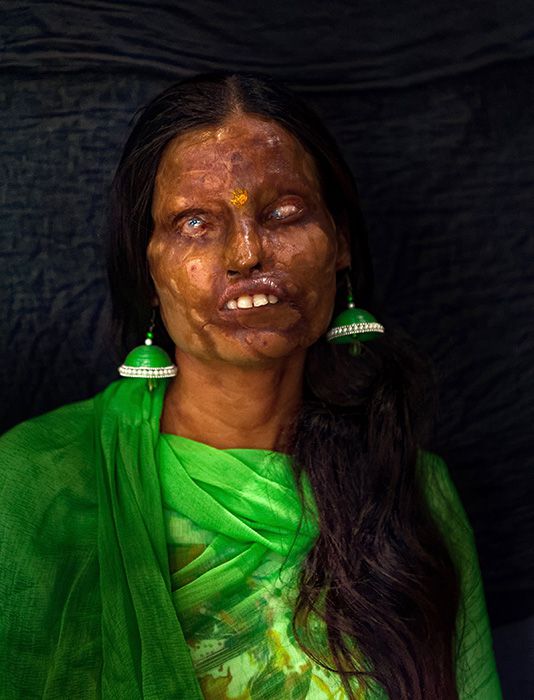
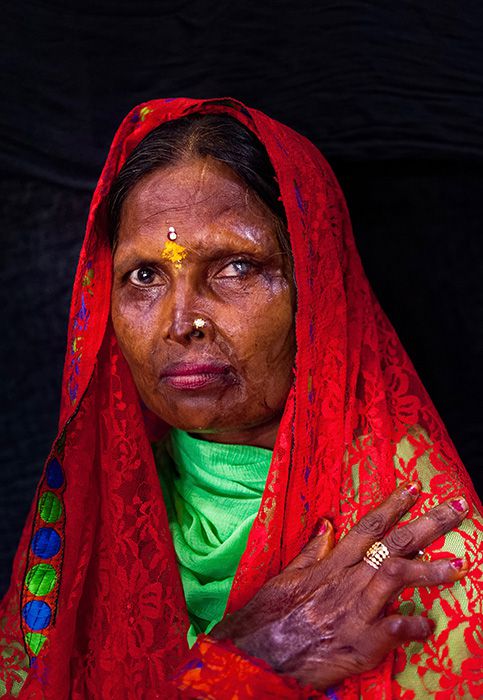
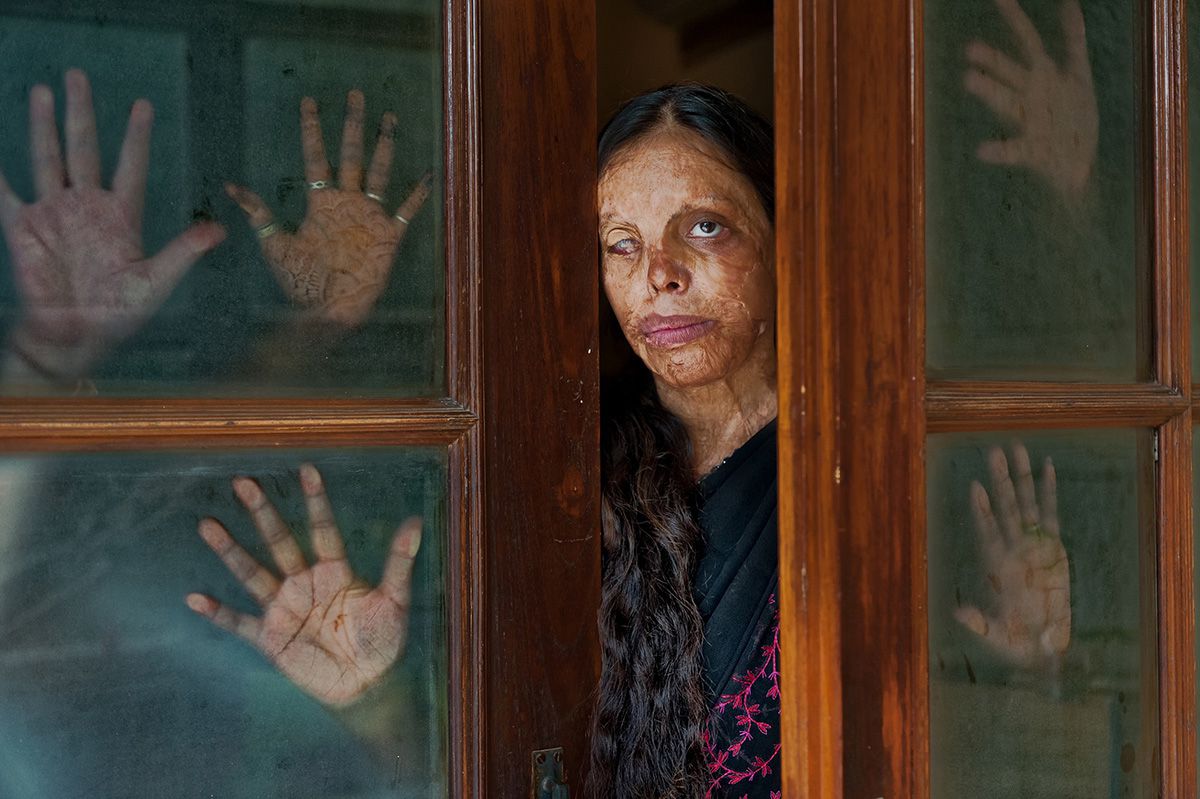
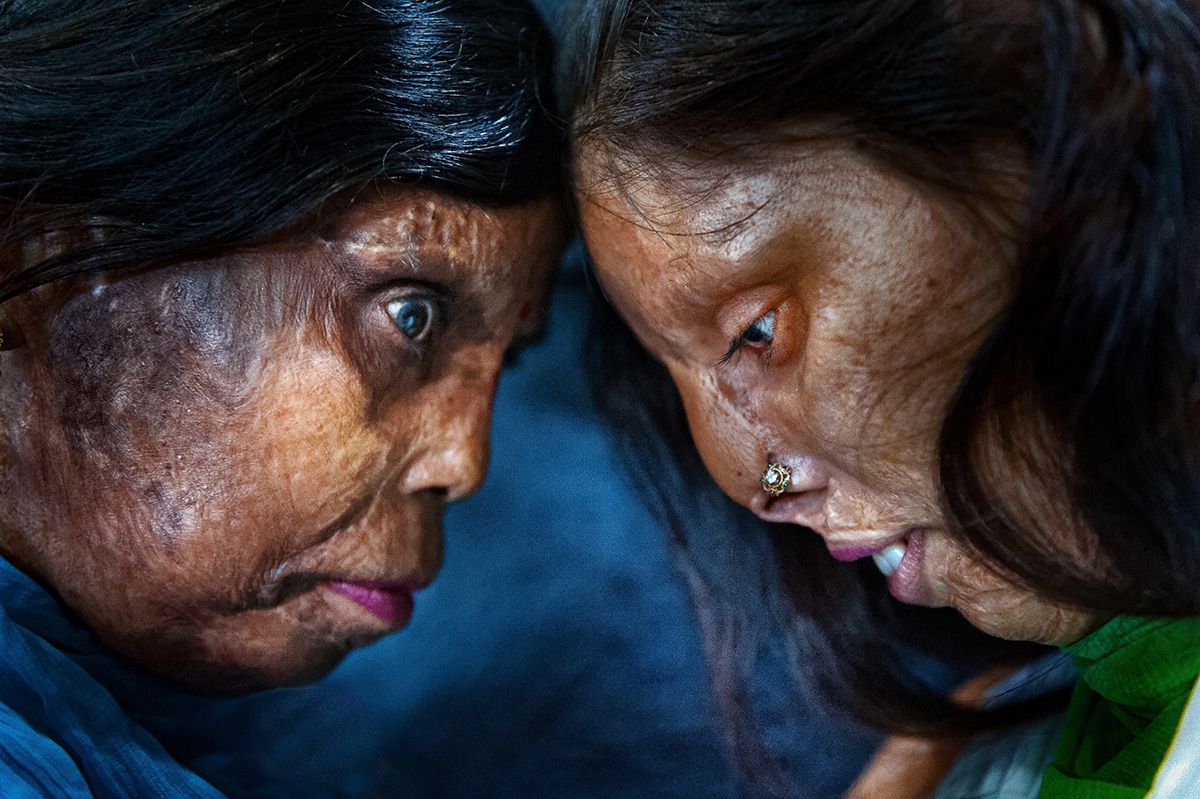
8. Silvia, you also have worked with some of the next generation victims of Bhopal, the city which is remembered across the globe for the worst industrial disaster ever. 35 years after the disaster, people are still suffering in Bhopal. The soil and water rendered toxic because of poisoned gas, while the world ignores their predicament. Did you decide to make this project before you started shooting it or was it a piece itself together with your skin project?
I have studied for a long time in Italy when these called problems of the second poisoning of Bhopal took place. I remember as a child that I heard of the chemical disaster on television, but I never imagined that after more than 35 years the problem would still exist. Friends helped me in order to get in touch with the Bhopal Medica Appeal organization, through which I got in touch with some families who agreed to host me in their houses. So, on the road from Delhi to Mumbai, I stopped in Bhopal to try to tell some stories, worthy of being told.
9. What thought process you had in your mind before shooting those families?
Before taking the portraits, I wanted to meet the families and to talk with them in order to know the stories of the people affected and what their illnesses were. Since the victims were children, I tried to take a light approach as if it was a game. I have had different approaches depending on whether the family was Hindu or Muslim. For example- to feel myself free I asked all the men to leave the room, and I remained alone with Zaed and his mom, and I managed to take creative shots. I cried a lot when I finished the shooting. I virtually felt the suffering of those children. I consoled myself that perhaps I brought them a few moments of lightheartedness and trying my best to tell the untold sufferings of them to the whole world.
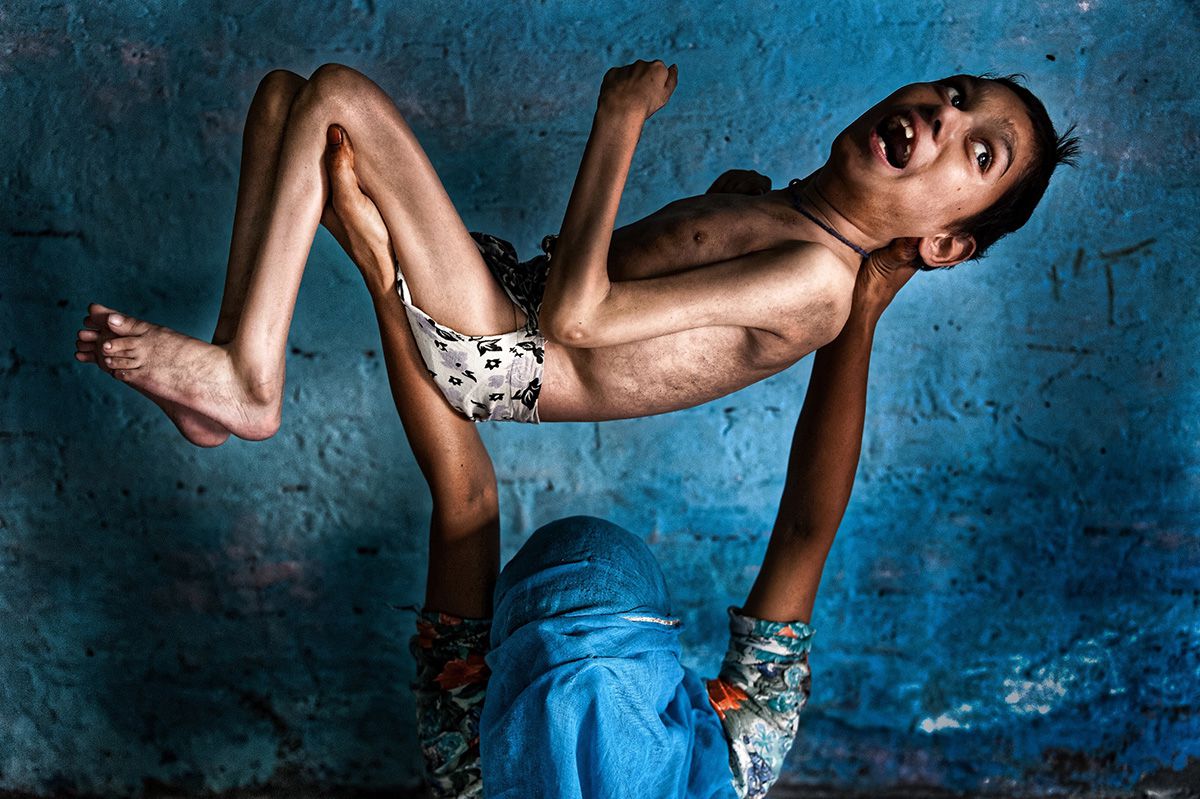

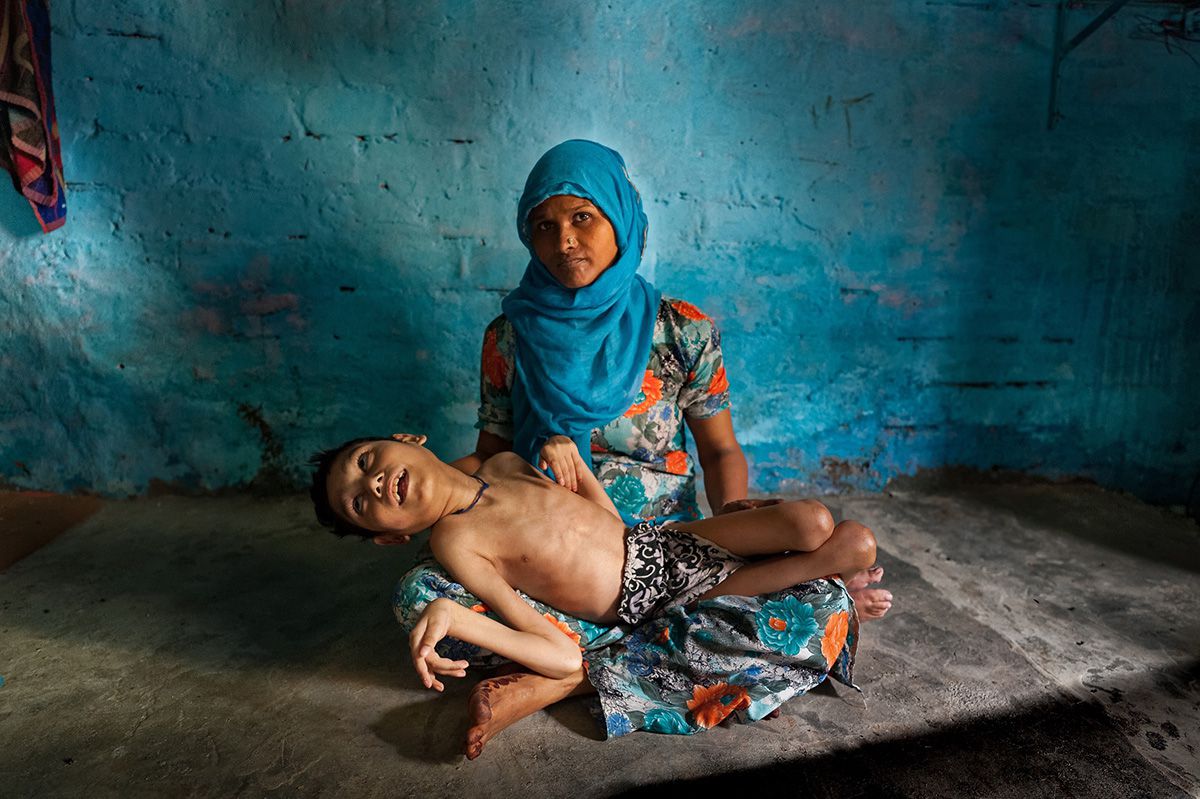
10. Besides these, you have worked on some other projects also. Requesting you to share about them with us.
After the Skin project that I made in 2017, I worked on two other projects. Beyond The Line, in Iraqi Kurdistan (2018); Maze of Metamorphosis, in Japan (2019). Through the first, I wanted to reflect diversity and freedom, and it was set in a barracks of Peshmerga female soldiers. Through the second, I wanted to reflect some social issues in a rich and advanced country like Japan which, however, sometimes struggled to reflect on itself. I used butoh dance (a dance based on transformations) as an expressive device of telling the difficult story.
11. When I look at your work, I can say that your approach to portraiture and photographing people is very intensive. How did that way of working with your subjects play into this project?
My projects so far are mainly portraits which are staged or posed because it is the most congenial medium to me. Several times I was asked if my projects had less power because of staged portraits. But pre-visualization of the frames allows me to be more prepared about the stories I want to tell along with their underlying social issues and to have a deeper relationship with people. In such a way my photography becomes more powerful and more symbolic, and less random. I can’t work in a different way now, I am inclined to this sort of procedure.
12. Currently, are you working on any project? How did it start? Please debrief us about that.
I have just finished the Japanese project, and I am preparing for exhibitions and cultural encounters on it. Usually, winter months are the ones dedicated to the study of new projects. I have many ideas in mind which I will try to deepen and connect the dots which will help me to frame a beautiful but untold story.
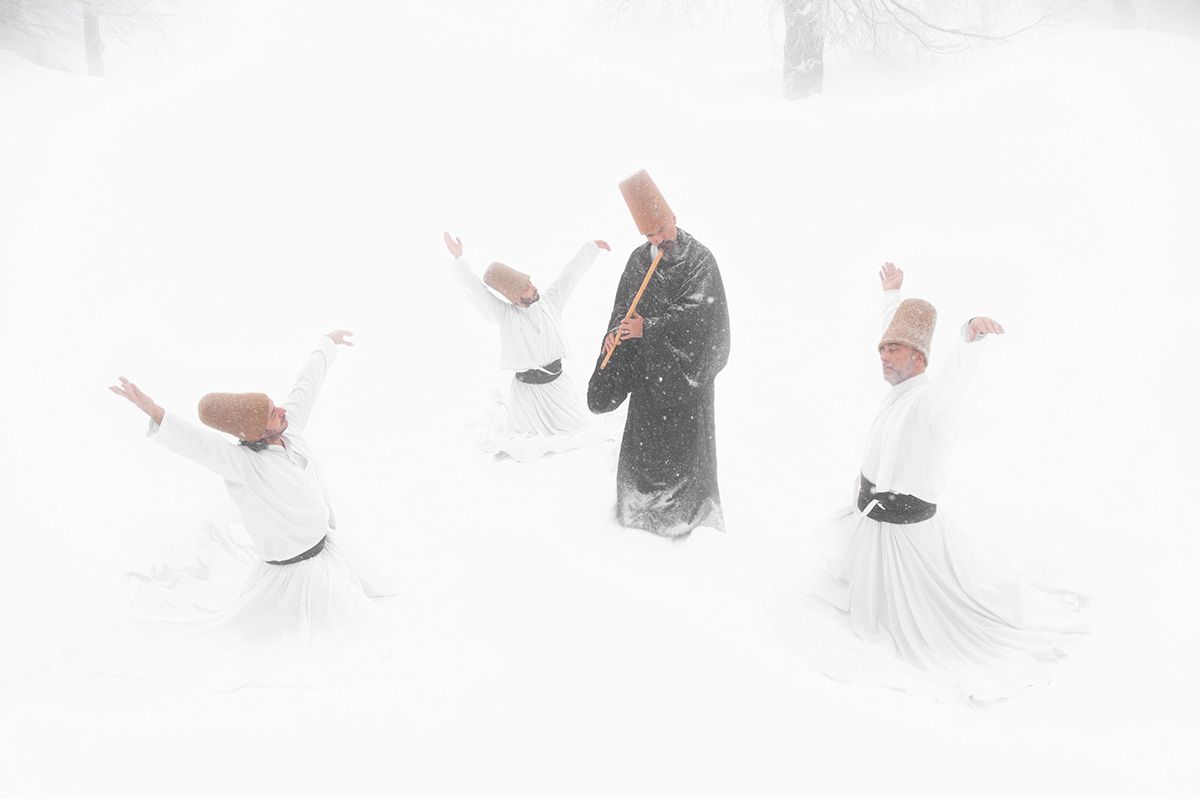
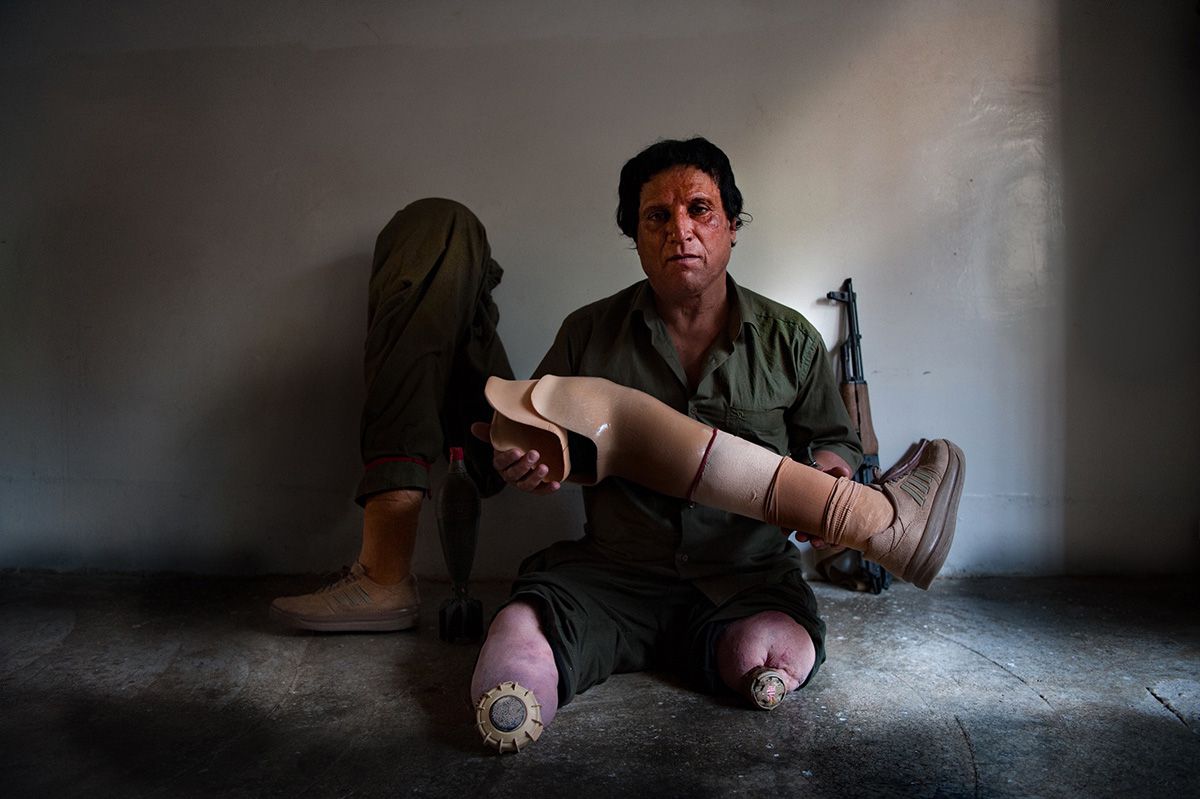
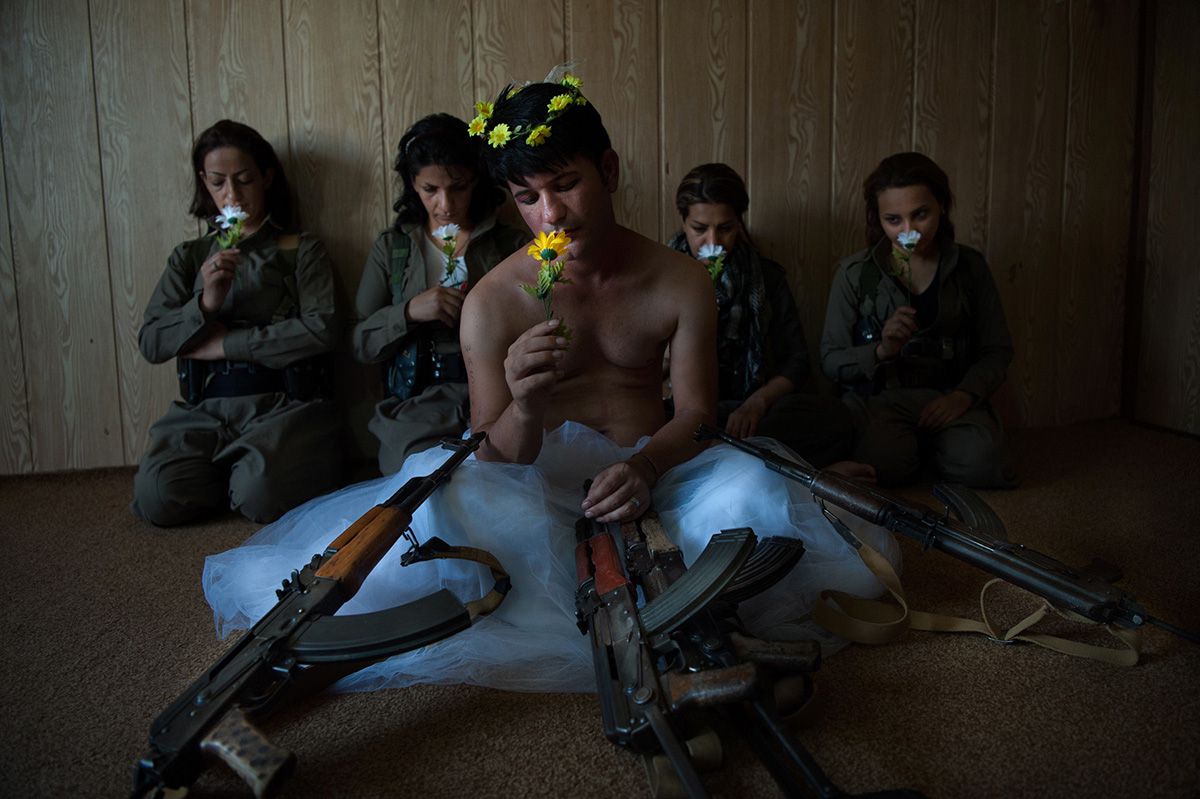
13. Now let’s go into the social media aspect of photography. What are your personal thoughts on Instagram as an image-making tool? Is it really helping in extrapolating talents, but we can’t deny that it has a significant role in shaping the future of photography?These days, people are running behind of likes rather than good content, what’s your thought on this. As you have a good number of followers on Instagram, how did you grow and how many numbers of likes and followers does matter to you?
I want my photography to speak about present days, if even better about the things that most people ignore. For this reason, I like to share my works on social media. But I don’t find anything interesting in making a photo or a project already done by someone. Many people on SM make technically beautiful shots of people or situations which are already portrayed. I find that it is now so popular to replicate photos that already exist, maybe because people are driven by the euphoria of “like”, or of winning a contest. You just have to google some kind of photos to realize what I’m talking about. Shots that are not interesting, is the way I see photography. I’m not talking about staged situations, but about untrue ones, such as the fishing with cormorants, the coloured fishing nets, the population of Ethiopia with flowers on their heads, the buffaloes in the fog. Photographic setsaredesigned for the Asian or European “tourist of the image”. There are a lot of such sets. Photographs tell nothing because there is nothing to speak about such as the names, stories, facts which are never said in the caption. Instead, the photographers say that they have been published here or there, that they have won this or that, or that the prints can be ordered, etc. It’s a pity that editors or juries reward shots equal to millions of other shots. They shouldn’t do it, if they do, it’s because maybe theyaregiven in to profitable rather than aesthetic or artistic logics. But I get angry when they are passed off for real shots. Here, it shows insincerity and dishonesty. They try to pass a tourist set for a true story, with no other purpose than to promote themselves. This is precisely what I would never want to do, and I hope I’ll never fall into that trap. Through my photos, I want to talk about themes and subjects, not about myself.
